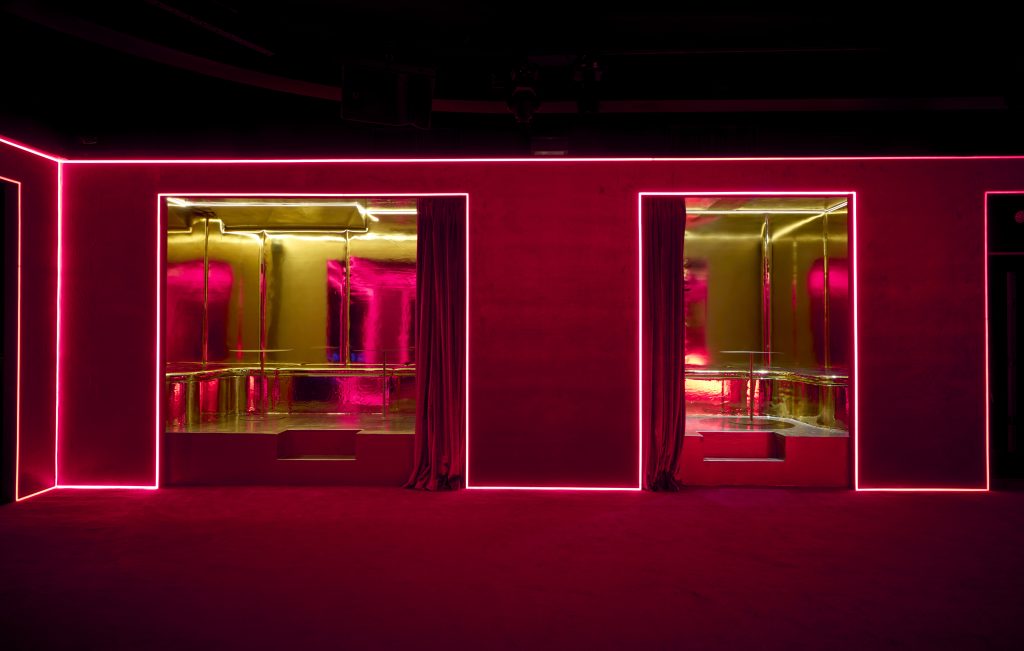Studio Visit: Atelier de Geste
Dancer-turned-designer Beau Rhee creates limited edition products inspired by movement and performance

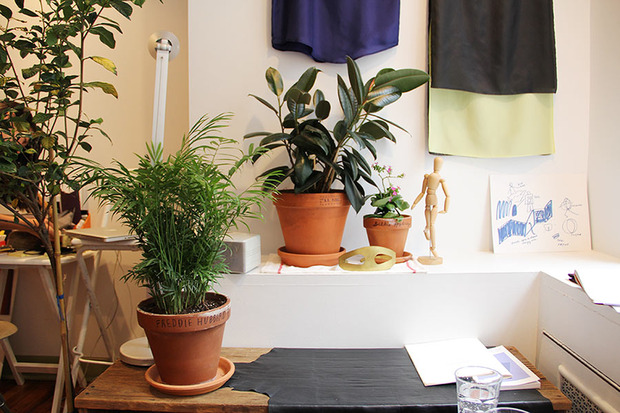
Beau Rhee has worked as a professional dancer in NYC for years (apprenticing with Bill T Jones and Arnie Zane), but in a superhuman feat, also found time to work for art galleries and fashion showrooms. Forever attracted to the visual, Rhee—a double major in dance and art history—found herself wanting to do more than just integrate sets and costumes into her choreography. Developing her design skills while pursuing a MFA in Geneva, Switzerland, Rhee soon after launched Atelier de Geste, a “performance-inspired” studio and brand, following the historical example of women artists (like Sonia Delaunay) who owned businesses on the side. A prop or costume used in an AdG performance or installation, for example, could be further developed into a design object or ready-to-wear tunic that remains long after the show has ended.
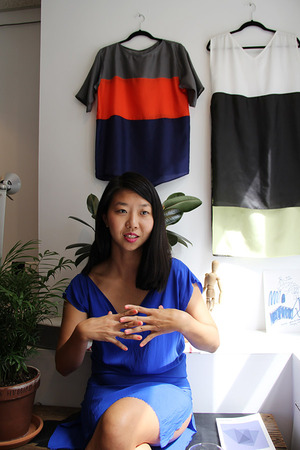
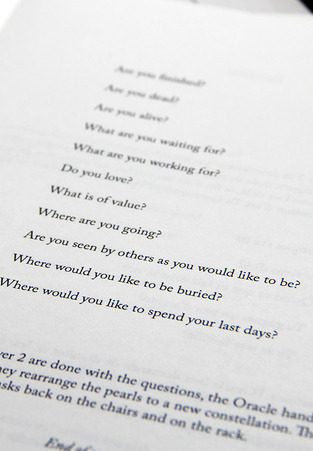
Heavily influenced by Oskar Schlemmer and Ballet Russes, Rhee adds a tangible dimension to the ephemeral nature of dance and movement through limited edition goods that undergo a lengthy creative exploratory process. Her concept scents and leggings have been picked up by The Cools, Anthropologie, Urban Outfitter’s Space Ninety 8 and more; you can also spot the latter in Pharell’s dance-themed music video “Marilyn Monroe.” We stopped by the Atelier de Geste studio in Manhattan to discuss her new tunics for fall, telling stories through objects and her current obsession with blue.
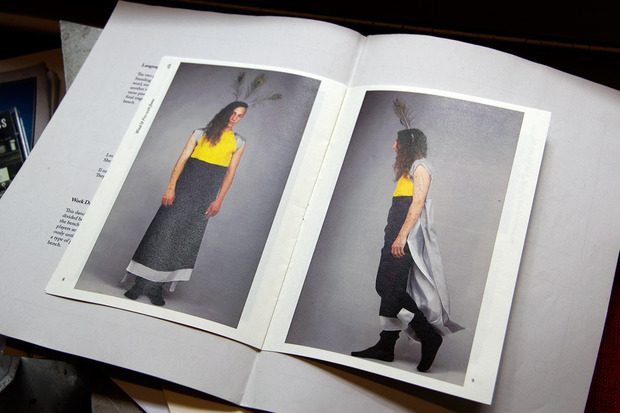
What attracted you to this hybrid studio-brand idea?
One of the reasons why I want to focus on product—or things that people can use alongside the “pure artistic” choreographed fixed stuff—is because I learned about so many artists in Europe, especially women artists, who were involved with textile and product, etc., such as Sonia Delaunay, who’s this famous abstract painter who [also] worked directly doing textile design. She was like a fashion girl: she made clothes, she made bathing suits. There’s another designer, Eileen Gray, who’s very famous—she was an architect and furniture designer. She had a storefront in Paris in the 1920s and she was doing her own carpets, etc. I found that in my research, I thought that was enriching in some ways: not only what artists made but how they practiced a lot of the time. I thought that it might have made their art more interesting—because they understand how to communicate with people in a way that’s not like super esoteric.
And everything is still pretty new and sort of in a continual experimental state.
The commercial launch [for Atelier de Geste] only happened last year and my plan is to show new editions once a year, generally in fall—so I’m really not on the fashion calendar at all. [laughs] Last year started with the scents. The fragrances were the first thing that I showed.

How did you come to develop these fragrances?
The premise of these was originally just, how to translate movement into fragrance: because both of these are ephemeral ideas. “Blood, Sweat and Tears” was about circles and blue—like repetition, water, etc. I would brainstorm addictive essences, something that goes over and over. Teas, tobacco, hints of coffee, woods that are very deep and kind of blues-y in some way. And then “The Good Earth” was all about upward, jumping and optimism. There’s this speech in Charlie Chaplin’s “The Great Dictator,” that’s very famous, that goes, “The good earth is rich and can provide for [everyone]..”
Chaplin speaks in a movie?
Yeah, he’s so prescient! It’s the first time Chaplin looks into the camera as, I think, himself. It’s called “The Barber’s Speech.” It’s not dance-dance, but I think of Chaplin as a dancer—so expressive. That performance was the inspiration for “The Good Earth;” it’s about the power of imagining utopia or abundance, almost.
It does smell really optimistic.
It’s like a pop of neon green; it has all kinds of really precious resins like opoponax and galbanum, resins which were perceived as holy or precious throughout time. They were used a lot in religious ceremonies but it’s mostly sap from trees, which is the earth. This one is very joyful, isn’t it?
And then “Wild is the Wind” is from a Nina Simone song and that one was kind of fiery, with tuberose and musk. I’m brainstorming [new scents] now and I’m inspired by two different things of ‘stone’ and ‘metal’ right now. I found myself getting into more and more elemental, earth things and so I think it would beautiful to have two contrapposto scents that are more sturdy. I think next year, 2015, hopefully there will be two more then.
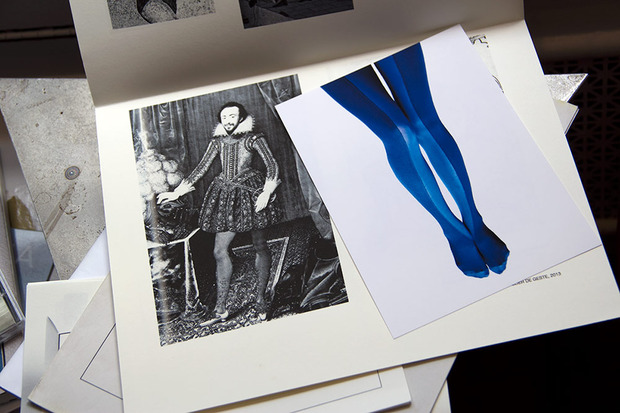
What was the concept behind the leggings?
There was a really specific reference—these really cool Renaissance tights. Look at this man! I became really interested in how tights had taken on this sexed [meaning]; now women wear tights. The tights thing was very personal because growing up dancing, I’d always worn tights.
So if you look at photographs of the [AdG] tights, the inside is more sheer. The interior and the exterior are like this old school, Simone de Beauvoir “the private is political” kind of thing. For the lookbook, we have guys wearing the tights; it’s this whole circle of trying to break down the gender barrier of the idea of tights.
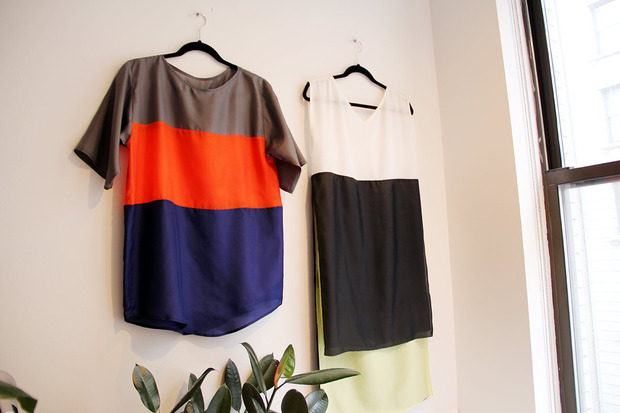
And this fall, Atelier de Geste be producing ready-to-wear for the first time. Can you walk us through the creation process?
The silk movement wear / tunics came naturally as an extension of creating a visual language for performance. I looked at a lot of atelier and workshop outfits of dancers and artists, the kind of boxy and free design that allows uninhibited movement and comfort. Ballets Russes costumes, free and simple with a lot of color, were also an inspiration. On a stage, color use and color blocking is a really effective way to communicate themes and ideas.
The basic shapes of the T-shirt and Tunics are for active people and open to endless interpretation. The length of the T shirt could make it a dress for ladies or a slightly long T for men. The tricolor aspect makes it a statement, a flag-esque piece, something to layer with a blazer or moto jacket, something special.
The Tunics all have high side slits that are measured to provide total range of motion for the leg—arabesques, plies, half moon pose, you name it—and also make them quite sexy, with or without tights. A lot of old Nijinsky photos picture him with a lot of deep Vs, as well as many other dancers… I personally think the neck line and the upper back are some of the most beautiful parts of the body, so the deep V of the neck and back harken to that idea. I also always need pockets, so there are hidden pockets nestled in the inner layer of the tunics. The single-layer design is all lined raw tussah silk on the bottom half (kind of looks like tweed). The material reminds me of Bauhaus uniforms or canvas painter aprons.
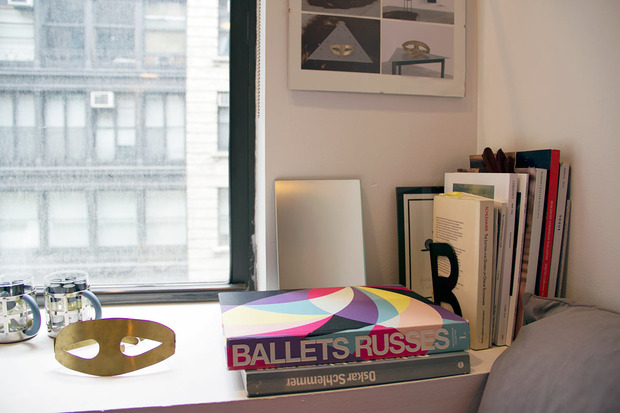
What are some of the creative projects you are working on for AdG that aren’t tied to a product?
I’m doing a “blue” project. It’s purely artistic, there’s no product involved—I think. (I might make tunics in a blue shade.) I’ve been obsessed with blue for a year and a half. In language, blue blood, blue collar, blue ruin (like the drink). Kind of how mystic and spiritual and beautiful it is, and also, there’s a profanity of it too: “I’ve got the blues,” and blues music. I’ve been writing notes about blue and collaborating with a few other artists to do sets, etc.
I’ve just choreographed three minutes of water spirit movement. Thinking about how algae moves in the water, a lot of hands, you know how when you’re moving in the water, there’s this kind of floaty-ness to your body? It’s so much fun, that’s my release—it’s just pure creativity, I don’t have to be bound by minimums and quantities and selling stuff. It’s a non-commercial Atelier de Geste project, in the works officially: rehearsal has started. I feel like I need to do stuff like that, and then it feeds back to the creative process.
Atelier de Geste movement tunics (produced in editions of 10 per style/size) will be available in their online store on 9 September 2014.
Images by Nara Shin
